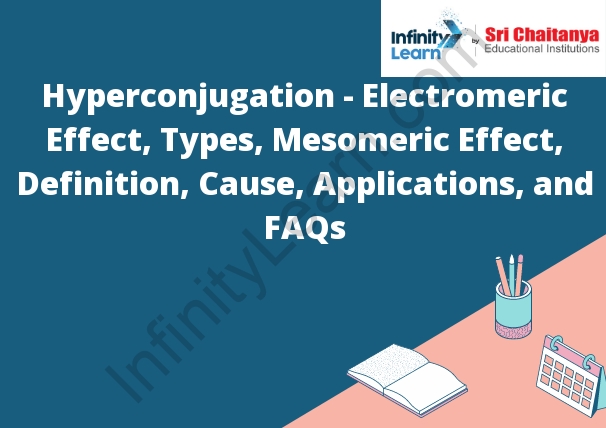Table of Contents
Hyperconjugation
Hyperconjugation is the interaction of a hype conjugated molecule with a Lewis acid to form a complex. In hyperconjugation, a π electron-rich molecule interacts with a Lewis acid to form a complex in which the π electron-rich molecule donates electrons to the Lewis acid. This interaction increases the stability of the complex by delocalizing the electrons in the π system.

Electromeric Effect
The electromeric effect is the transfer of a proton from one molecule to another. This can occur through a direct transfer of a proton from one molecule to another, or through the donation of a proton to a third molecule, which can then transfer the proton to the second molecule.
Concept of Hyperconjugation
- Hyperconjugation is the interaction of a benzene ring with an adjacent alkyl group. The alkyl group donates a electron to the benzene ring, which stabilizes the ring. This interaction increases the stability of the benzene ring, and makes it more difficult to break the ring.
- Hyperconjugation is a type of chemical reaction in which a small molecule, such as a hydrocarbon, adds to a larger molecule, such as an aromatic ring. The small molecule becomes attached to the ring via a carbon-carbon double bond, and the reaction forms a new ring system. This type of reaction is particularly common in organic chemistry, and it can be used to create a variety of different molecules.
- One of the benefits of hyperconjugation is that it can help to stabilize a molecule. The new ring system that is formed can help to prevent the larger molecule from breaking down, and it can also help to shield the molecule from attack by other molecules. This can be particularly useful in creating molecules that have a desired chemical structure.
- Hyperconjugation can also be used to create new molecules that have different properties than the original molecules. For example, the new ring system that is formed can have a different reactivity than the original molecules. This can be used to create new molecules that have a desired property, such as a specific chemical reactivity.
- Hyperconjugation is a powerful tool in organic chemistry, and it can be used to create a variety of different molecules. The new ring system that is formed can help to stabilize a molecule, and it can also be used to create new molecules that have a desired property.
Applications
- Hyperconjugation is the interaction of electron donating groups and electron withdrawing groups in a molecule. This interaction can lead to the stabilization of a molecule or the destabilization of a molecule. The strength of the hyperconjugative interaction is determined by the electronegativity of the groups involved. The more electronegative the group, the stronger the interaction.
- There are a few different applications of hyperconjugation. One application is in the stabilization of molecules. In this application, the hyperconjugative interaction can help to stabilize a molecule by pushing electron density towards the more stable parts of the molecule. This can help to stabilize a molecule and make it more stable.
- Another application of hyperconjugation is in the destabilization of molecules. In this application, the hyperconjugative interaction can help to destabilize a molecule by pushing electron density away from the more stable parts of the molecule. This can help to destabilize a molecule and make it less stable.
- A third application of hyperconjugation is in the determination of the geometry of a molecule. In this application, the hyperconjugative interaction can help to determine the geometry of a molecule by pushing electron density towards or away from certain parts of the molecule. This can help to determine the geometry of a molecule.
- Overall, the applications of hyperconjugation are important in determining the stability of a molecule and the geometry of a molecule.






